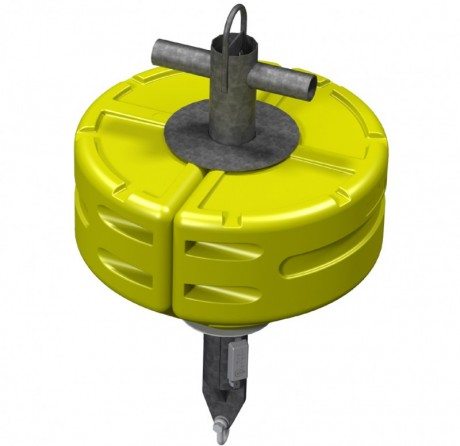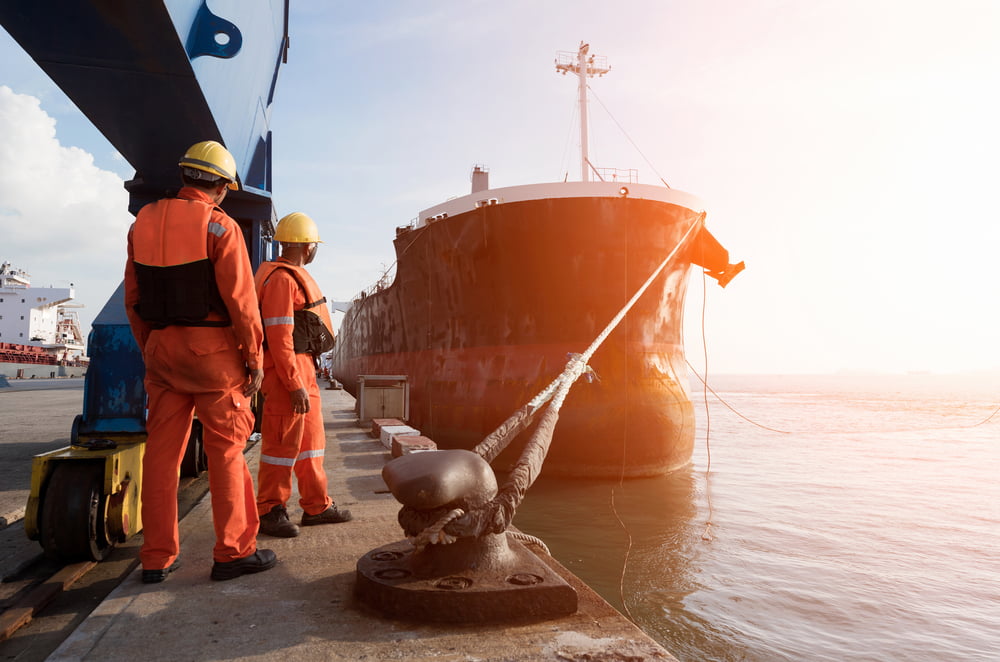Mooring buoys are the unsung heroes of the maritime and boating world — simplifying the anchoring process, enhancing safety and maximising space efficiency in crowded waterways.
But selecting the wrong mooring buoy for its intended purpose, whether securing cruise ships in ports or stabilising offshore platforms and drilling rigs, comes at a cost…
Damage to the buoys themselves may result in repair bills or replacement costs. Sinkers and chains may need to be replaced if they cannot be recovered and there are the significant costs involved in retrieving, inspecting and redeploying the buoy.
Luckily, we have created a guide to help you invest in the most appropriate and reliable mooring buoys to suit your needs…
Nearshore application buoys
Mooring buoys come in several types, each designed for specific purposes, and they play a crucial role in securing vessels of various sizes and in different water conditions.
For ship-to-ship transfers, offshore maintenance or temporary mooring points for vessels, single-point mooring buoys are a suitable option. Designed to provide a single attachment for boats or ships, single-point mooring buoys are typically smaller and less complex than other types.
The Mobilis AMR 600 mooring buoy, for example, is perfect for marina, port and coastal applications.
Thanks to its coated steel central structure and rotationally moulded, medium-density polyethylene (MDPE) float sections, the AMR 600 is a strong, lightweight option capable of supporting substantial loads.
In crowded waterways where space efficiency is paramount, buoys like the AMR 600 mean more vessels can anchor securely without requiring extensive swinging room — and more cruise ships and boats can share the same water space without the risk of dangerous collisions.
Single-point mooring buoys also make the anchoring process quicker and more efficient, which is particularly valuable in busy marinas and anchorages where time is of the essence… 
The Mobilis AMR 2500 is particularly useful in this instance, as it can benefit from a quick-release hook and shackle attachment. With this mooring solution, vessel operators can approach the buoy, quickly attach their lines or ropes and secure their boat — without requiring labour-intensive anchoring procedures.
Deepwater application buoys
Whilst single-point mooring buoys are useful in shallower waters, multi-point mooring buoys are designed for larger vessels or those in more exposed locations.
Providing multiple attachment points, the Mobilis AMR 5000 offers increased stability and control — essential for offshore oil and gas operations and deep-sea mooring applications.
With a selection of possible mooring attachments, from a quick-release hook, shackle, static ’T’ or D link, the AMR 5000 can accommodate multiple vessels, enhancing stability in deep waters or rough seas. Robust and reliable attachment hardware is a critical component, as it provides the necessary tension to keep the buoy in place and resist the forces exerted by boats or ships moored to it.
The AMR 5000 also provides up to 5000 KG gross buoyancy, which helps large vessels securely attach to the mooring buoy and distribute its load evenly. Its buoyancy ensures that the forces exerted by the ship are absorbed and evenly distributed through the attachment hardware — minimising the stress on the vessel’s equipment and preventing any sudden jerking or swaying.
For ports with increasing freight flows, a bespoke mooring solution may be the best option. The Port of Rotterdam, for example, enlisted Mobilis to design and manufacture the Mobilis AMR 14000 — a custom mooring system.
With more capacity to handle the steady increase in vessel numbers and size, the AMR 14000 was launched in 2015. This bespoke system replaced the port’s existing single-point mooring buoys with larger multi-point buoys, and its four-point mooring system with an eye and bollard combination allows for a quick release operation without using hooks — the first of its kind on the market.
Considerations for mooring buoys
Though there are many buoys to choose from, their moorings are an often-undervalued part of the system. They allow the buoy to move freely and ride out the worst weather anticipated during its deployment.
The correct mooring length, chain size and sinker can be selected using the IALA-approved CALMAR mooring line calculation software to ensure the solution is suitable. It is also crucial for chains and moorings for navigation aids to resist wear and corrosion in harsh sea conditions. But chain is frequently purchased on price, leading to poor quality materials and manufacturing — particularly in buoy shackles.
On balance, investing in the longevity and reliability provided by high-quality chains and moorings will undoubtedly offset any additional costs. By choosing a first-class manufacturer, users can minimise maintenance and maximise the working life of a mooring system.
Hydrosphere has been supplying high-quality marine aids to navigation — including mooring buoys — since 1994. Get in touch with our specialist consultants at 01420 520374 or email sales@hydrosphere.co.uk to discuss your next maritime project.








